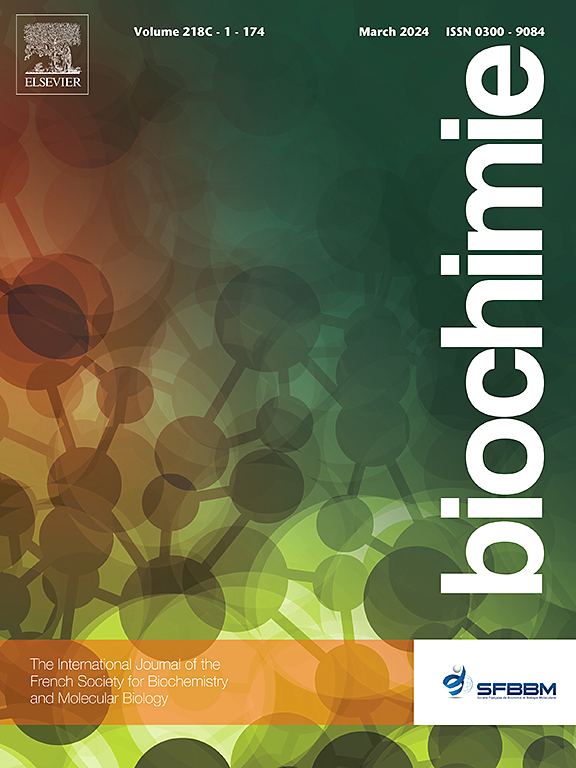利用触角蛋白质组学揭示中华蜜蜂卫生行为的分子基础
IF 3
3区 生物学
Q2 BIOCHEMISTRY & MOLECULAR BIOLOGY
引用次数: 0
摘要
蜜蜂,特别是印度蜜蜂的卫生行为对蜂群的健康至关重要,因为它有助于减少疾病和寄生虫的影响。尽管其重要性,潜在的分子机制仍然没有充分表征。采用无标记定量蛋白质组学方法,研究了与卫生行为相关的触角蛋白质组学。我们采用主成分分析、偏最小二乘判别分析和RT-qPCR来鉴定参与这种行为的重要蛋白质。我们的分析发现,在高卫生行为的菌落中有408种蛋白,在低卫生行为的菌落中有419种蛋白,其中219种蛋白的丰度存在显著差异。值得注意的是,一些气味结合蛋白在高卫生菌落中上调。此外,途径富集分析表明,RNA转运和多种信号通路参与了这一行为特征。蛋白质-蛋白质相互作用分析表明,气味结合蛋白之间存在大量聚类,强调了它们在卫生行为机制中的关键作用。本研究增强了我们对中华蜜蜂卫生行为的分子基础的理解,将气味结合蛋白定位为潜在的生物标志物,进一步研究旨在改善群体健康和抵御病虫害的能力。本文章由计算机程序翻译,如有差异,请以英文原文为准。

Unveiling the molecular basis of hygienic behavior in Apis cerana indica through antennal proteomics
Hygienic behavior in honey bees, particularly Apis cerana indica, is essential for the health of the colony as it helps reduce the impact of diseases and parasites. Despite its importance, the underlying molecular mechanisms remain inadequately characterized. Using a label-free quantitative proteomics method, this study investigates the antennal proteome associated with hygienic behavior. We employed Principal Component Analysis, Partial Least Squares Discriminant Analysis, and RT-qPCR to identify significant proteins that are involved in this behavior. Our analysis identified 408 proteins in colonies demonstrating high hygienic behavior and 419 proteins in those with low hygienic behavior, with 219 proteins showing significant differences in abundance. Notably, several odorant-binding proteins were upregulated in high-hygiene colonies. Furthermore, pathway enrichment analysis revealed that RNA transport and various signaling pathways are involved in this behavioral trait. The protein-protein interaction analysis illustrated substantial clustering among the odorant-binding proteins, underscoring their critical role in the mechanisms underlying hygienic behavior. This research enhances our understanding of the molecular basis of hygienic behavior in Apis cerana indica, positioning odorant-binding proteins as potential biomarkers for further studies that aim at improving colony health and resilience against pests and diseases.
求助全文
通过发布文献求助,成功后即可免费获取论文全文。
去求助
来源期刊

Biochimie
生物-生化与分子生物学
CiteScore
7.20
自引率
2.60%
发文量
219
审稿时长
40 days
期刊介绍:
Biochimie publishes original research articles, short communications, review articles, graphical reviews, mini-reviews, and hypotheses in the broad areas of biology, including biochemistry, enzymology, molecular and cell biology, metabolic regulation, genetics, immunology, microbiology, structural biology, genomics, proteomics, and molecular mechanisms of disease. Biochimie publishes exclusively in English.
Articles are subject to peer review, and must satisfy the requirements of originality, high scientific integrity and general interest to a broad range of readers. Submissions that are judged to be of sound scientific and technical quality but do not fully satisfy the requirements for publication in Biochimie may benefit from a transfer service to a more suitable journal within the same subject area.
 求助内容:
求助内容: 应助结果提醒方式:
应助结果提醒方式:


